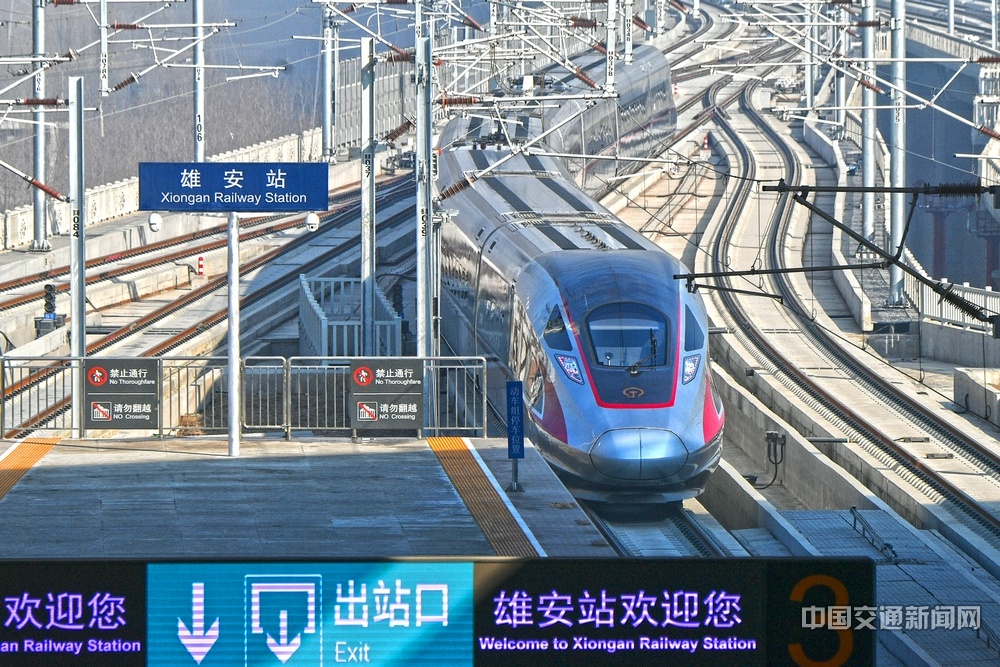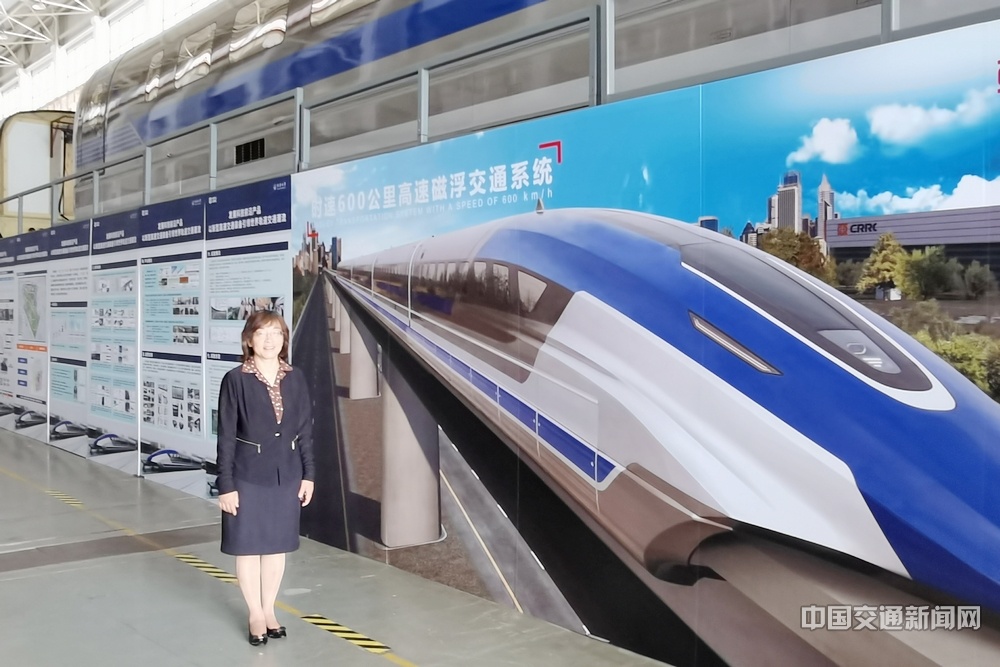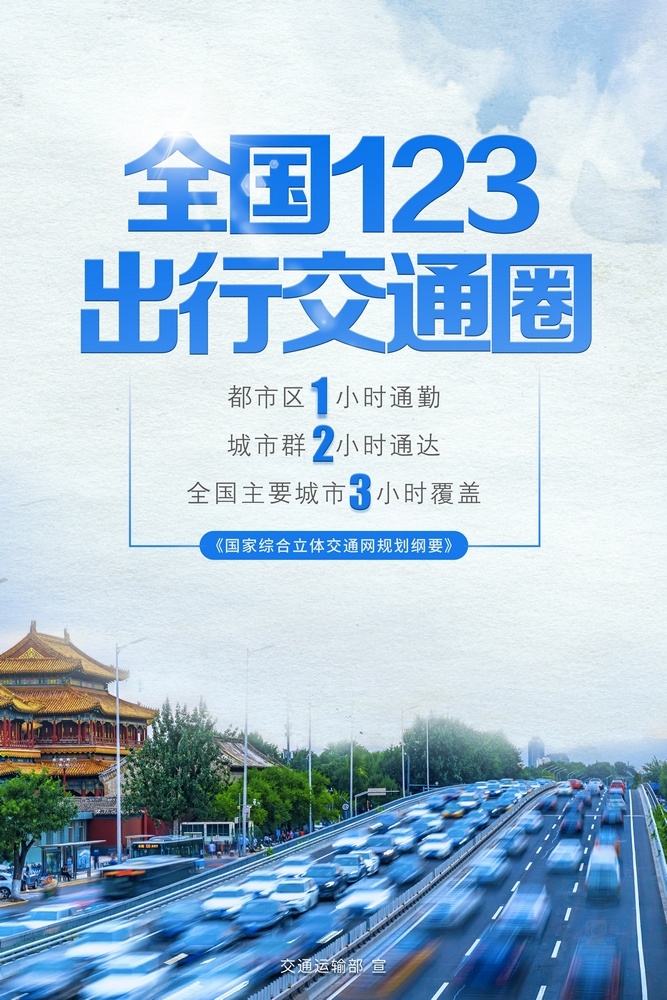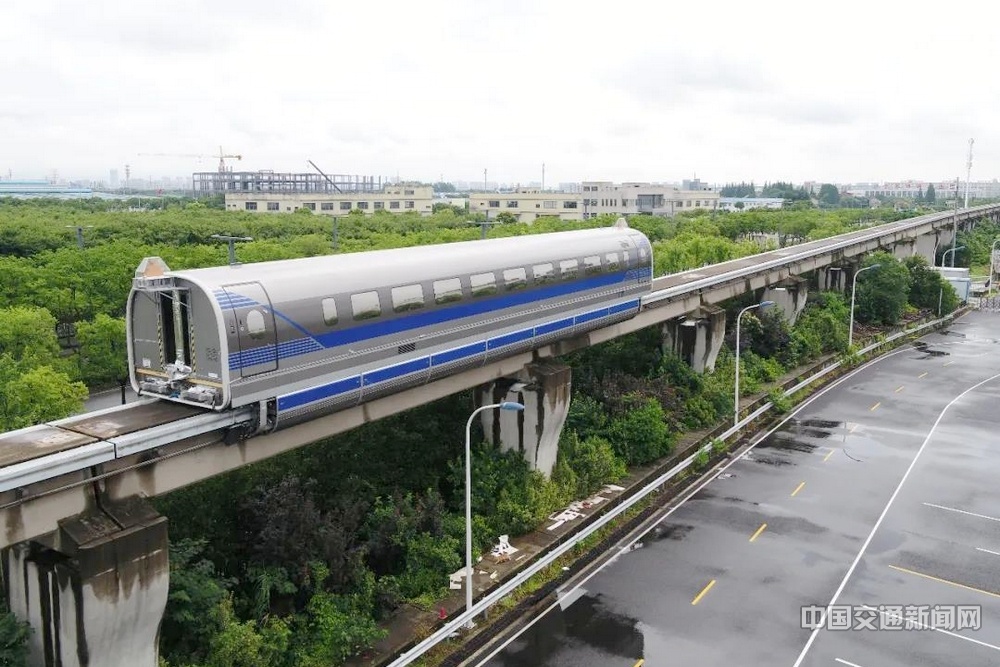The history of transportation is as old as humanity itself. Transportation revolves around technological innovations that allow humankind to progress, as evidenced by the leapfrogging from the slow movement of horse and cart to the modern advancement of "urban integration". The continued development of transportation has not only greatly saved the time and costs of travel, but markedly facilitated exchanges and cooperation among people, paving the way for information sharing, business development and technological progress.
Future prospects for China’s transport look bright. Recently, the Central Committee of the Communist Party of China and the State Council issued the "Outline of the National Comprehensive Three-dimensional Transport Network Planning" (hereinafter referred to as the "Outline"). According to the Outline, a more convenient and high-quality transport network will be built by 2035, allowing residents of all county-level administrative regions (except those in some of the remotest areas) to have access to a national highway within travel times of 15 minutes, an expressway within half an hour and a railway within one hour.

A high-speed train pulling in at Xiongan Railway Station
Intercity railways constitute an important part of the transport framework of urban clusters, one which Professor CHEN Xiaohong and her team have been working on for many years. The photo above shows the Beijing-Xiongan intercity railway.
The Outline is the result of efforts from many scientific research institutions in Beijing and a scientific research team from Shanghai, namely CHEN Xiaohong’s team from Tongji University, which was appointed to conduct research into the city clusters transport framewrok.
"The Outline is unveiled with the aim of developing a modern, high-quality and comprehensive national transport network by 2035," CHEN Xiaohong stated. Tongji College of Transportation Engineering (CTE) researchers will endeavor to fully leverage Tongji’s solid research experience to provide intellectual support for the realization of the unprecedented blueprint mapped out in the Outline.
Research results on the urban clusters framework contribute to the preparation of the Outline
In Section Two of the Outline, plans have been detailed for the development of railways, roads, waterways, civil airports and postal and express delivery services to establish a comprehensive transport network. It is clarified in the Outline that intercity transport networks will be piloted first in four "pole regions": Beijing-Tianjin-Hebei region (Jingjinji), the Yangtze River Delta (YRD) economic region, the Guangdong-Hong Kong-Macao Greater Bay Area (Greater Bay Area), and the Chengdu-Chongqing economic circle. It will then be applied gradually to other city clusters. The Outline will promote research in the layout of high-speed magnetic levitation channels and the construction of Maglev test lines between megacities.

Professor CHEN Xiaohong
Why were CHEN Xiaohong and her team chosen to be responsible for the research? The research results of CHEN’s team serve as a compelling answer: “this credit goes to the Tongji transportation planning team for their scientific research and practical achievements in the past twenty years, including scholars such as LIN Hangfei, LI Ye, WU Jiaorong, YE Jianhong and ZHANG Hua." It is both in line with the development goals of large and mega cities and the development policies of cities at all levels to recognise that transportation in metropolitan areas and city clusters are key drivers of urbanization, according to CHEN Xiaohong.
Since 1999, CHEN Xiaohong’s team has completed extensive research, including the development of China's comprehensive transport system during the 12th Five-Year Plan period, the transportation development strategies and integrated transport network planning for the Yangtze River Delta (YRD), Pearl River Delta (PRD), Xiamen-Zhangzhou-Quanzhou Metropolitan Area, Changzhutan Metropolitan Area and Shanghai's expressway network planning. Among such research, Shanghai Expressway Network Planning is one of the earliest studies of its kind carried out in China. Drawing on the research results, the project team proposed a highway network covering 15-30-60 minutes travel time from Shanghai as part of a multi-level urban spatial system entitled ‘1966’. More importantly, the team’s research results are further applied in the development of the YRD, the west coast of the Taiwan Straits, the middle reaches of the Yangtze River, the Greater Bay Area and other types of multi-level urban clusters and metropolitan areas.
The special research into city cluster transport networks reached a successful outcome in November of last year. The expert team all agreed that the research report which was delivered provided a broad vision, solid analysis and clear conclusions, which were of guiding significance for the preparation of the Outline.
In the thematic research, the team proposed to divide China's city clusters and metropolitan areas into three categories. This was based on a thorough analysis of the medium and long-term trends of China's new urbanization and city clusters development, , competitiveness and strategic positioning. According to the three categories of city clusters, the team worked out different development strategies for establishing a world-class, comprehensive transportation network system that would develop world-class urban clusters based on railways, create more transport hubs in the central and western regions and improve access in remote areas. In addition, the team proposed that new-generation high-speed Maglev systems should be planned in world-class city clusters such as the Jingjinji region, the YRD economic belt, the Greater Bay Area and the Chengdu-Chongqing economic circle. The proposal also suggested that trunk corridors should be reserved, that major transport ports be better managed and controlled, and that construction of test and engineering lines be promoted.
In recent years, Tongji has scored remarkable achievements in the field of high-speed magnetic levitation. Established with support at national level, the National Maglev Transportation Technology Research Center of Tongji University (NMTC) has launched three key Research and Development (R&D) projects under the national "863" program since 2001. Having mastered a whole set of core technologies in magnetic levitation, including the design of full-speed spectrum Maglev systems, basic theory of vehicle-rail coupling, levitation controller R&D and high-speed rail turnout design, NMTC has cultivated a distinctive team of high-calibre Maglev technology professionals, derived from a diverse background of industry, academia, research and application.
In June 2019, a prototype Maglev train with a design speed of 600 km per hour was rolled off the production line in China. The year 2020 witnessed great efforts by the project team to overcome all the difficulties in the wake of the COVID-19 pandemic and complete the technical tests and verification of the 600 km/h prototype Maglev train ensuring a timely and quality output. "Accelerating R&D in the high-speed Maglev is to enable people to travel among city clusters within two hours" observed CHEN Xiaohong, the director of the NMTC.
Innovation is a prime mover in transport development
In addition to CHEN Xiaohong, many scholars from the CTE of Tongji represented by LING Jianming, YANG Xiaoguang, XU Ruihua, LI Xinghua, ZHANG Rong, MA Wanjing, DU Yuchuan, TENG Jing are also committed to the establishment of a modern, high-quality and comprehensive national transport network that is convenient, cost-effective, green, intelligent and safe.
On December 10, 2020, LING Jianming was invited to participate in the Expert Consultation Forum on the development of civil aviation in the 14th Five-Year Plan period held by the Civil Aviation Administration of China (CAAC). The forum was held with the participation of experts, scholars and industry professionals to discuss the implementation of the spirit upheld by the Fifth Plenary Session of the 19th CPC Central Committee and the systematic planning of the reform and development of civil aviation during the 14th Five-Year Plan period. As an important component in the national comprehensive three-dimensional transport network, the pivotal role of civil aviation should be brought fully into play to support Science and Technology advancement for future transport network development. LING Jianming, responsible for the preparation of the civil aviation S&T development plan during the 14th Five-Year Plan period, took the lead in the formulation of the research report on this plan in the professional field of civil aviation airport systems during the 14th Five-Year Plan Period.
In recent years, China Transportation Institute at Tongji (CTIT), led by LI Xinghua, has carried out extensive research on strategies, plans and policies for the national comprehensive transport network development. The efforts of the CTIT has brought a series of research studies to completion, including “Research on Global Transit Network Layout”, “Reasonable Scale and Structure Optimization of Comprehensive Transport Network” and “New Drivers and Space for Transportation Development in the New Era”. The CTIT proposed the development of a global transport network comprising six corridors, three routes, three main passages and seven major hubs; a "1+1" global hub city system based on the regional hub nodes along the Belt and Road; and a special focus on major global cities. In addition, the CTIT has systematically demonstrated the unprecedented scale and optimal configuration of various transportation modes in China's comprehensive three-dimensional transport network mapped in the Outline. It also pointed out new technologies, modes and business models emerging in the transportation development within the context of the new age of transport technology. All such new concepts, methods and technical paths have been widely applied to various transportation programs in China.

National 1-2-3 Travel Circle
In 2003, entrusted by the China Railway Shanghai Group, the expert team led by JI Ling, YE Yuling and XU Xingfang from the CTE of Tongji, conducted special research on rail transit systems planning in the YRD metropolitan area. The team proposed three planning concepts, namely: multilevel transport planning; comprehensive rail network joint planning; and integrated planning of regional rail transit and highway networks. In the meantime, the team pointed out that the key to sound planning of regional rail transit, trunk railway and urban rail transit lies in addressing issues concerning the integration of the three transport modes with an emphasis on connectivity and interface between transport modes (for example transfers at stations). TENG Jing, the director of the Department of Transportation Engineering, observed, "With good foresight, research planning can serve as the fundamental basis for the subsequent planning of a rail transit network in the YRD."
In 2005, JI Ling took the lead and joined with XU Xingfang, YE Yuling and TENG Jing to initiate research into a multi-level rail transit network in the YRD region. The research team proposed the construction of an intercity rail transit system encompassing rail transit networks between cities, interconnectivity and effective transportation management in the YRD metropolitan area.
"We propose to build intercity rail networks. Take Shanghai-Nanjing Intercity Railway as an example, which is seamlessly integrated with the old rail network to make commuting possible between Shanghai and Nanjing. In this case, commuters living in Shanghai can take the rail shuttle to work on time in the morning. Such planning turned out to be quite forward-looking at the time." TENG Jing remarked.
The research team guided by ZHANG Rong, YANG Sheng and ZHU Ye has long been engaged in research on multimodal transportation planning and management. The research achievements of the team enjoy wide application in sea-rail intermodal transportation at Shanghai Port, Ningbo Port and Lianyungang Port, contributing significantly to shifting more freight transport for export from road to railway and optimizing the integrated freight system in the YRD. The team has also undertaken a series of key projects, including: the YRD Railway Logistics Development Planning, Yiwu Railway Logistics Center Planning and Transport Configuration Optimization, China-Europe Block Train Multimodal Transportation Planning and Shanghai Lingang Sea-Rail Multimodal Transportation Planning. ZHANG Rong announced that the team has long been dedicated to the research into logistics planning and freight management of big cities, and has participated in the preparation of Shanghai freight and logistics systems planning, the development and implementation of a survey on Shanghai freight transportation as well as R&D on the Beijing urban freight model.
MA Wanjing's team has long been committed to the research in the field of transportation system management and smart travel services, and has developed key technologies such as mixed-flow road design, multimodal transportation network collaborative management and control, public transport precision services and efficient traffic technology. The research results of the team are widely used in the transport governance of Shanghai, Beijing, Shenzhen, Jinan and other cities, providing key technical support for 70% of the "national demonstration cities of public transport development". To boost high-quality development in the new era, research teams of Tongji have made joint efforts to promote R&D of key technologies and systems for better travel services in smart cities, MA Wanjing added.
DU Yuchuan's team has long been focused on R&D in high-precision perception of operation status and facility performance in transport systems as well as AI analysis and decision making from traffic big data. The team cooperated with Shanghai Airport Authority to complete the national "863" project of “Multimodal Transport Information Collaboration Service in Integrated Transport Hubs” and the key project: “Research and Application of Key Technologies in Passenger Mover System in Pudong International Airport”. This, launched by Shanghai Science and Technology Committee (STCSM), broke through bottlenecks that hindered key technologies such as dynamic organization and collaborative operation of high-intensity multimodal transport hubs for distributing passenger flow, intelligent identification of differentiated travel needs and precision services. Thanks to the technologies of AI-based passenger flow features identification and passenger flow guidance, based on information demand, the team has developed customized solutions for flow guidance and transfer system scheduling management for different groups of passengers, which has remarkably improved the services and operation efficiency of the airport hub. The key intelligent operation service technologies also won wide acclaim and recognition when applied in the taxi and parking management system of Hongqiao Airport and the MRT system of Pudong International Airport.
With great devotion to the research into the intelligent transport organization of rail transit, XU Ruihua’s team is the first, at home and abroad, to have realized the network ticket clearing and passenger flow distribution calculation with super large scale, complex structure, massive passenger flow and mixed operation. The team is also the first to have developed and implemented the Computer Compiling System for Train Operation Diagram of Urban Rail Transit Network (TPM) and the auxiliary decision system for operation management. It enabled the train operation diagram to be complied intelligently and rapidly. The systems now see their wide application in nearly 30 cities, including mega-cities such as Beijing, Guangzhou and Shenzhen, and have won high recognition and wide acclaim from clients and travelers.
Recently, the research team has completed the research on the operation scheme of the high-speed railway network in Jiangsu Province. Key question arising were: how to work out an efficient and high-quality transport organization plan to meet the people’s growing expectation for travelling in China that is covered by a complex transport network with a wide range of rail lines? And how to connect high-speed, standard, intercity, suburban and urban railways as well as urban rail transit to achieve high-quality and efficient transport integration? To answer such questions, XU Ruihua and his team are strengthening efforts in researching intelligent transport organization and dispatching.
As an expert in "intelligent transportation and urban traffic congestion management", YANG Xiaoguang and his team have long been devoted to research in integrated intelligent transport and hub transport systems. YANG's team strives to integrate ten networks: the demand network; transportation network; facility network; energy network; service network; Internet; sensing network; management and control network; communication network; and governance through information and intelligent technology. This will support the harmonious, smooth, reliable, safe and efficient operation of the national multi-modal and multi-scale three-dimensional transport network and hub city transport, as well as optimize the integrated and centralized development. At present, the research results of the team have been widely used in metropolitan areas and city clusters such as Shanghai, the YRD and the Greater Bay Area.
Research plays key role in putting in place the national transportation plan
What will China’s transport sector be like in 2035? Linking different regions, cities and modes of transportation in an organic and three-dimensional manner that will serve as a strong catalyst to build up the framework of the "Belt and Road" transport infrastructure and strengthen China’s transport system, YANG Xiaoguang advised.
It is proposed in the Outline that the urban and rural transport network should be effectively connected. Besides, efforts should be made to promote the coordination, integration and construction of trunk, intercity and urban (suburban) railways, and urban transit to build an integrated transport network that integrates operation and management services, and realizes interconnectivity of facilities, interoperability of ticket systems, mutual recognition of security checks, information sharing and payment compatibility. Moreover, modern control technologies should be used to upgrade intelligent levels of train dispatching, command and transportation management with the intent to build “the YRD on Rail”. XU Ruihua said that all these initiatives have brought both unseen opportunities and challenges to the transportation management of the rail transit network, with emerging issues that need researching in depth. The research includes regional multimodal rail transit network operation and management and intelligent transportation, which has been the key research field for XU’s Team in recent years. In the future, priority will be given to the integration of the YRD and the construction of “the YRD on Rail” to improve the intelligent operation and management of the regional integrated rail transport network.

The 600 kilometers per hour high-speed Maglev test sample vehicle was successfully tested on the Maglev test line at the Jiading campus of Tongji
"We are now researching on how different systems of rail transport in metropolitan areas can be interconnected to provide safe, reliable and convenient integrated transport services." TENG Jing said. “The Department of Transportation Management Engineering has set up several research teams that are now working on system resources allocation, station facilities layout and design, transportation management schemes, scheduling and command schemes, collaborative transport service standards, management rules and coordination mechanisms in the context of different interconnected operation modes.” The relevant research results have already been applied and have proved the feasibility of the intercity and municipal rail transit integrated operation organization in the YRD and Greater Bay Area. They will be further used in the formulation of relevant industry and local technical standards and specifications.
In the expert consultation forum on Civil Aviation development in the 14th Five-Year Plan period, LING Jianming pointed out four priorities for developing the national comprehensive three-dimensional transport network. First, we should think out of the box and shift to collaborative development between the industry and the civil aviation sector to make airports, industries and cities develop in a synergistic manner. Second, we should coordinate the civil aviation layout across the country to build a world-class airport cluster and comprehensive three-dimensional transport hub with integrated transportation services. Third, with science and technology as key generators, we should further improve the ground work efficiency of civil aviation, make the four airports more intelligent and autonomous, and use technologies to improve airport infrastructure, services, as well as operation and management. Fourth, we should give full play to the pivotal role of science and technology platforms, such as the construction of the civil aviation key laboratories, to support the development of the national comprehensive three-dimensional transport network.
Since 2012, CHEN Xiaohong’s team has carried out extensive research into innovation in transportation services and offered recommendation policies for the healthy development of emerging travel services. The results of many think tanks, including the status quo and countermeasures of the online car ride-hailing or ‘E-hailing’ service industry, the application of new technologies and the improvement of transportation quality and efficiency, have been adopted by decision-making departments. CHEN Xiaohong introduced the key strategic consulting project of the Ministry of Transport (MOT), “Research on the Application of New Technologies for Improving Transportation Quality and Benefits”. Besides, CHEN’s team offered dozens of insights into transportation development based on the systematic analysis and judgement of trends of transportation modernization under the new round of scientific and technological innovations. These included those related to accelerating the R&D of intelligent vehicle infrastructure cooperative systems (IVICT) technologies; standard and new generation high-speed Maglev systems and test route selection; promoting electrified, green and intelligent transport as well as developing a modern transport governance system. Presently all such research innovations have not only formed a mission that falls on the shoulders of the teachers and students of Tongji CTE, but also inspires a great many scientific researchers to continue their efforts for building up the strength of China’s transport.
Written by CHENG Guozhen
Source text: http://www.zgjtb.com/m/zhitong/2021-03/12/content_258233.htm
https://news.tongji.edu.cn/info/1003/76815.htm